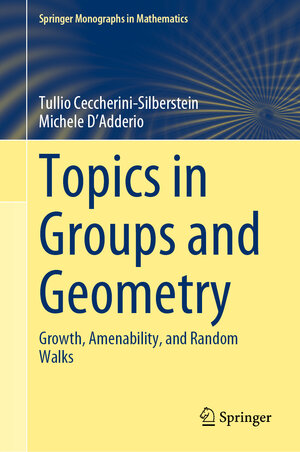
“The book under review gives a detailed introduction to several important topics in Geometric Group Theory at a level suitable for advanced undergraduates or graduate students. … The book … is a useful addition to the literature. … Each chapter has a range of exercises at a range of levels … most are independent problems useful for self-study. There are solutions or hints to some of the exercises at the back of the book.” (John M. Mackay, Mathematical Reviews, February, 2024)
Topics in Groups and Geometry
Growth, Amenability, and Random Walks
von Tullio Ceccherini-Silberstein und Michele D'Adderio, Vorwort von Efim ZelmanovThis book provides a detailed exposition of a wide range of topics in geometric group theory, inspired by Gromov’s pivotal work in the 1980s. It includes classical theorems on nilpotent groups and solvable groups, a fundamental study of the growth of groups, a detailed look at asymptotic cones, and a discussion of related subjects including filters and ultrafilters, dimension theory, hyperbolic geometry, amenability, the Burnside problem, and random walks on groups. The results are unified under the common theme of Gromov’s theorem, namely that finitely generated groups of polynomial growth are virtually nilpotent. This beautiful result gave birth to a fascinating new area of research which is still active today.
The purpose of the book is to collect these naturally related results together in one place, most of which are scattered throughout the literature, some of them appearing here in book form for the first time. In this way, the connections between these topics are revealed, providing a pleasant introduction to geometric group theory based on ideas surrounding Gromov's theorem.
The book will be of interest to mature undergraduate and graduate students in mathematics who are familiar with basic group theory and topology, and who wish to learn more about geometric, analytic, and probabilistic aspects of infinite groups.



